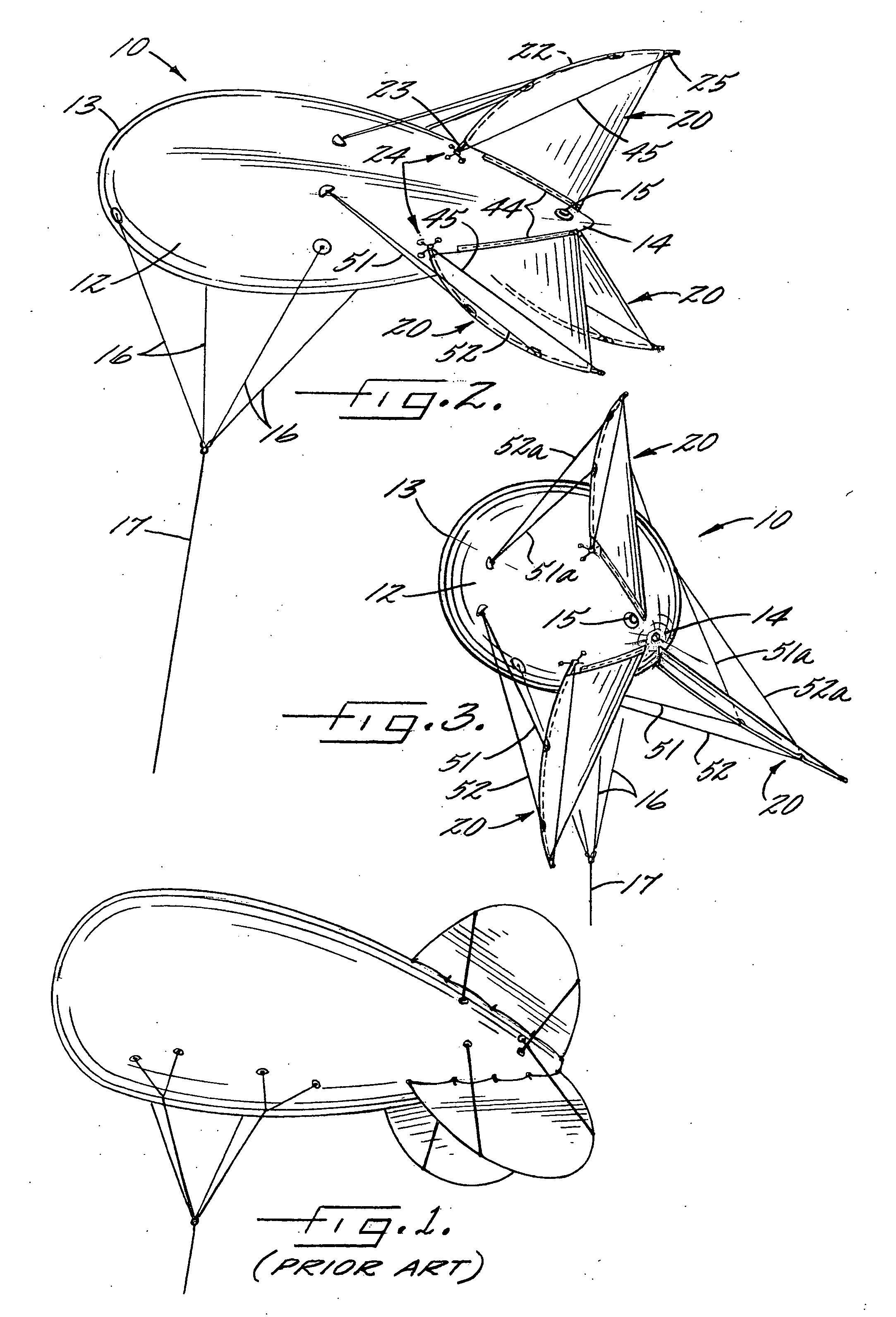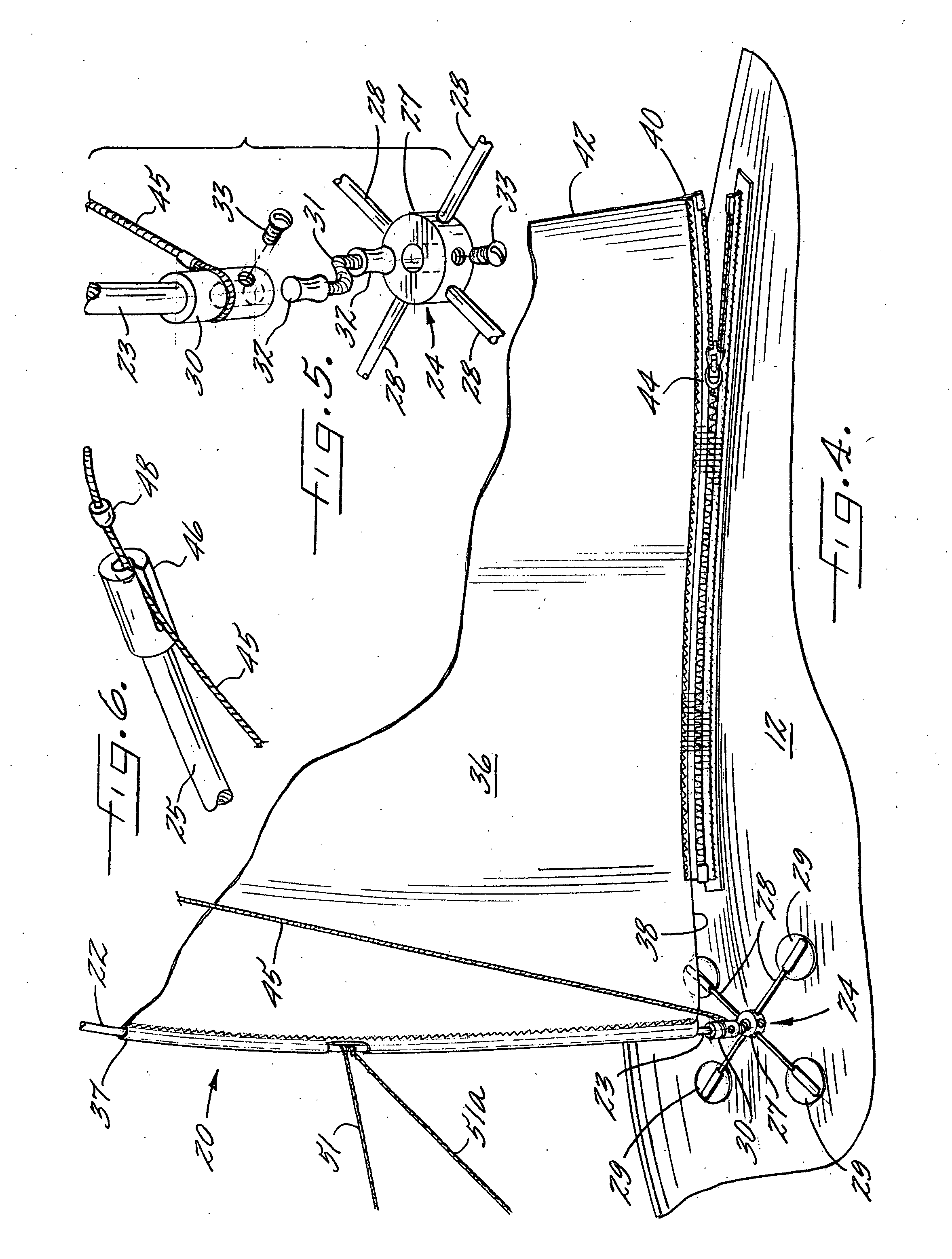Tethered or free flight blimp with collapsible tail fins
- Summary
- Abstract
- Description
- Claims
- Application Information
AI Technical Summary
Benefits of technology
Problems solved by technology
Method used
Image
Examples
Embodiment Construction
[0032] The present inventions now will be described more fully hereinafter with reference to the accompanying drawings, in which several, but not all embodiments of the inventions are shown. Indeed, the invention may be embodied in many different forms and should not be construed as limited to the embodiments set forth herein. Rather, these embodiments are provided so that this disclosure will satisfy applicable legal requirements. Like numbers refer to like elements throughout.
[0033] Referring more particularly to the drawings, FIGS. 2 and 3 illustrate a lighter than air aerodynamic blimp 10 which embodies the present invention and which comprises an elongate tubular aerodynamically shaped envelope 12 of flexible sheet material, such as polyurethane film. The envelope 12 defines a forward or nose end 13 and an opposite tail end 14, and so as to define a longitudinal direction therebetween.
[0034] The envelope 12 incorporates a conventional valve 15 adjacent the tail end for admitt...
PUM
 Login to View More
Login to View More Abstract
Description
Claims
Application Information
 Login to View More
Login to View More - R&D Engineer
- R&D Manager
- IP Professional
- Industry Leading Data Capabilities
- Powerful AI technology
- Patent DNA Extraction
Browse by: Latest US Patents, China's latest patents, Technical Efficacy Thesaurus, Application Domain, Technology Topic, Popular Technical Reports.
© 2024 PatSnap. All rights reserved.Legal|Privacy policy|Modern Slavery Act Transparency Statement|Sitemap|About US| Contact US: help@patsnap.com










